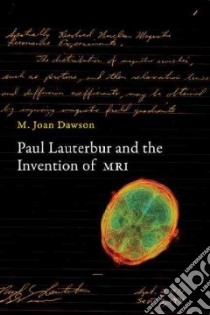Paul Lauterbur and the Invention of MRI - 9780262019217
Un libro in lingua di Dawson M. Joan edito da Mit Pr, 2013
- € 8.90
- Il prezzo è variabile in funzione del cambio della valuta d’origine
On September 2, 1971, the chemist Paul Lauterbur had an idea that would change thepractice of medical research. Considering recent research findings about the use of nuclear magneticresonance (NMR) signals to detect tumors in tissue samples, Lauterbur realized that the informationfrom NMR signals could be recovered in the form of images -- and thus obtained noninvasively from aliving subject. It was an unexpected epiphany: he was eating a hamburger at the time. Lauterburrushed out to buy a notebook in which to work out his idea; he completed his notes a few days later.He had discovered the basic method used in all MRI scanners around the world, and for this discoveryhe would share the Nobel Prize for Physiology or Medicine in 2003. This book, by Lauterbur's wifeand scientific partner, M. Joan Dawson, is the story of Paul Lauterbur's discovery and thesubsequent development of the most important medical diagnostic tool since theX-ray.
With MRI, Lauterbur had discovered an entirely new principle of imaging.Dawson explains the science behind the discovery and describes Lauterbur's development of the idea,his steadfastness in the face of widespread skepticism and criticism, and related work by otherscientists including Peter Mansfield (Lauterbur's Nobel co-recipient), and Raymond Damadian (whofamously feuded with Lauterbur over credit for the ideas behind MRI). She offers not only the storyof one man's passion for his work but also a case study of how science is actually done: a flash ofinsight followed by years of painstaking work.
Informazioni bibliografiche
- Titolo del Libro in lingua: Paul Lauterbur and the Invention of MRI
- Lingua: English
- Autore: Dawson M. Joan
- Editore: Mit Pr
- Collana: Mit Pr (Hardcover)
- Data di Pubblicazione: 23 Agosto '13
- Genere: BIOGRAPHY and AUTOBIOGRAPHY
- Argomenti : Magnetic Resonance Imaging history Biography Magnetic Resonance Spectroscopy instrumentation Biography Nobel Prize Biography
- Pagine: 273
- Dimensioni mm: 228 x 152 x 15
- EAN-13: 9780262019217


